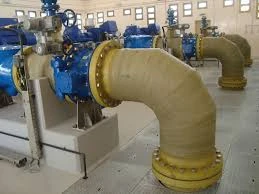
-
 Afrikaans
Afrikaans -
 Albanian
Albanian -
 Amharic
Amharic -
 Arabic
Arabic -
 Armenian
Armenian -
 Azerbaijani
Azerbaijani -
 Basque
Basque -
 Belarusian
Belarusian -
 Bengali
Bengali -
 Bosnian
Bosnian -
 Bulgarian
Bulgarian -
 Catalan
Catalan -
 Cebuano
Cebuano -
 China
China -
 China (Taiwan)
China (Taiwan) -
 Corsican
Corsican -
 Croatian
Croatian -
 Czech
Czech -
 Danish
Danish -
 Dutch
Dutch -
 English
English -
 Esperanto
Esperanto -
 Estonian
Estonian -
 Finnish
Finnish -
 French
French -
 Frisian
Frisian -
 Galician
Galician -
 Georgian
Georgian -
 German
German -
 Greek
Greek -
 Gujarati
Gujarati -
 Haitian Creole
Haitian Creole -
 hausa
hausa -
 hawaiian
hawaiian -
 Hebrew
Hebrew -
 Hindi
Hindi -
 Miao
Miao -
 Hungarian
Hungarian -
 Icelandic
Icelandic -
 igbo
igbo -
 Indonesian
Indonesian -
 irish
irish -
 Italian
Italian -
 Japanese
Japanese -
 Javanese
Javanese -
 Kannada
Kannada -
 kazakh
kazakh -
 Khmer
Khmer -
 Rwandese
Rwandese -
 Korean
Korean -
 Kurdish
Kurdish -
 Kyrgyz
Kyrgyz -
 Lao
Lao -
 Latin
Latin -
 Latvian
Latvian -
 Lithuanian
Lithuanian -
 Luxembourgish
Luxembourgish -
 Macedonian
Macedonian -
 Malgashi
Malgashi -
 Malay
Malay -
 Malayalam
Malayalam -
 Maltese
Maltese -
 Maori
Maori -
 Marathi
Marathi -
 Mongolian
Mongolian -
 Myanmar
Myanmar -
 Nepali
Nepali -
 Norwegian
Norwegian -
 Norwegian
Norwegian -
 Occitan
Occitan -
 Pashto
Pashto -
 Persian
Persian -
 Polish
Polish -
 Portuguese
Portuguese -
 Punjabi
Punjabi -
 Romanian
Romanian -
 Russian
Russian -
 Samoan
Samoan -
 Scottish Gaelic
Scottish Gaelic -
 Serbian
Serbian -
 Sesotho
Sesotho -
 Shona
Shona -
 Sindhi
Sindhi -
 Sinhala
Sinhala -
 Slovak
Slovak -
 Slovenian
Slovenian -
 Somali
Somali -
 Spanish
Spanish -
 Sundanese
Sundanese -
 Swahili
Swahili -
 Swedish
Swedish -
 Tagalog
Tagalog -
 Tajik
Tajik -
 Tamil
Tamil -
 Tatar
Tatar -
 Telugu
Telugu -
 Thai
Thai -
 Turkish
Turkish -
 Turkmen
Turkmen -
 Ukrainian
Ukrainian -
 Urdu
Urdu -
 Uighur
Uighur -
 Uzbek
Uzbek -
 Vietnamese
Vietnamese -
 Welsh
Welsh -
 Bantu
Bantu -
 Yiddish
Yiddish -
 Yoruba
Yoruba -
 Zulu
Zulu
frp boat body
The Advancements and Benefits of FRP Boat Bodies
Fiberglass Reinforced Plastic (FRP) has emerged as a revolutionary material in the construction of boat bodies, replacing traditional materials such as wood and metal in many applications. The growing popularity of FRP in marine design stems from the numerous advantages it offers, including lightweight properties, corrosion resistance, and ease of maintenance. This article delves into the significance of FRP as a material for boat bodies, exploring its benefits and impact on the boating industry.
The Advancements and Benefits of FRP Boat Bodies
Corrosion resistance is another key benefit of FRP boat bodies. Unlike metal, which can rust and degrade over time, FRP is inherently resistant to water, salt, and chemicals. This property greatly extends the lifespan of a boat, reducing maintenance costs and improving re-sale values. For boat owners, this means more time enjoying the water and less time and money spent on repairs and upkeep. Additionally, the smooth surface of FRP prevents barnacles and other marine growth from adhering and causing drag, further enhancing performance.
frp boat body

Furthermore, the manufacturing process of FRP allows for a high degree of customization and versatility. Designers can create intricate shapes and styles that were previously difficult to achieve with traditional materials. This versatility is particularly advantageous for boat builders looking to cater to niche markets or specific customer preferences. From luxury yachts to fishing boats, FRP can be molded into various forms, allowing for unique aesthetic designs and functional features.
Another significant advantage of FRP boat bodies is their energy efficiency during production. The lightweight nature of the material means that less energy is required for transportation, handling, and, importantly, operation. Many companies are increasingly adopting eco-friendly practices, and the use of FRP aligns well with these efforts by minimizing the carbon footprint associated with boating. Additionally, some manufacturers are utilizing sustainable practices in sourcing the materials and producing FRP, further enhancing its appeal.
The impact of FRP on the boating industry goes beyond the technical benefits. It aligns with the current trend toward sustainable and environmentally conscious practices in manufacturing. With growing awareness about the importance of sustainability, consumers are increasingly turning to products that not only perform well but also have a reduced environmental impact. FRP fulfills these requirements, allowing boat builders to meet consumer demand without compromising quality or performance.
In conclusion, the adoption of FRP technology in boat body construction has transformed the marine industry. Its lightweight, durable, and corrosion-resistant properties make it a superior choice compared to traditional materials. As boat designers and manufacturers continue to embrace innovations, FRP is set to play a pivotal role in shaping the future of boating. With benefits ranging from performance enhancements to sustainability, the FRP boat body is not just a trend; it is a significant advancement that stands to redefine how we approach boat design and manufacturing. The future of boating looks bright, and FRP is at the forefront of this exciting evolution.
Latest news
-
Exploring the Benefits of Top Hammer Drifter Rods for Enhanced Drilling PerformanceNewsJun.10,2025
-
High-Precision Fiberglass Winding Machine for GRP/FRP Pipe Production – Reliable & Efficient SolutionsNewsJun.10,2025
-
FRP Pipes & Fittings for Shipbuilding - Corrosion-Resistant & LightweightNewsJun.09,2025
-
Premium FRP Flooring Solutions Durable & Slip-ResistantNewsJun.09,2025
-
Premium Fiberglass Rectangular Tanks Durable & Lightweight SolutionNewsJun.09,2025
-
Tapered Drill String Design Guide Durable Performance & UsesNewsJun.09,2025









